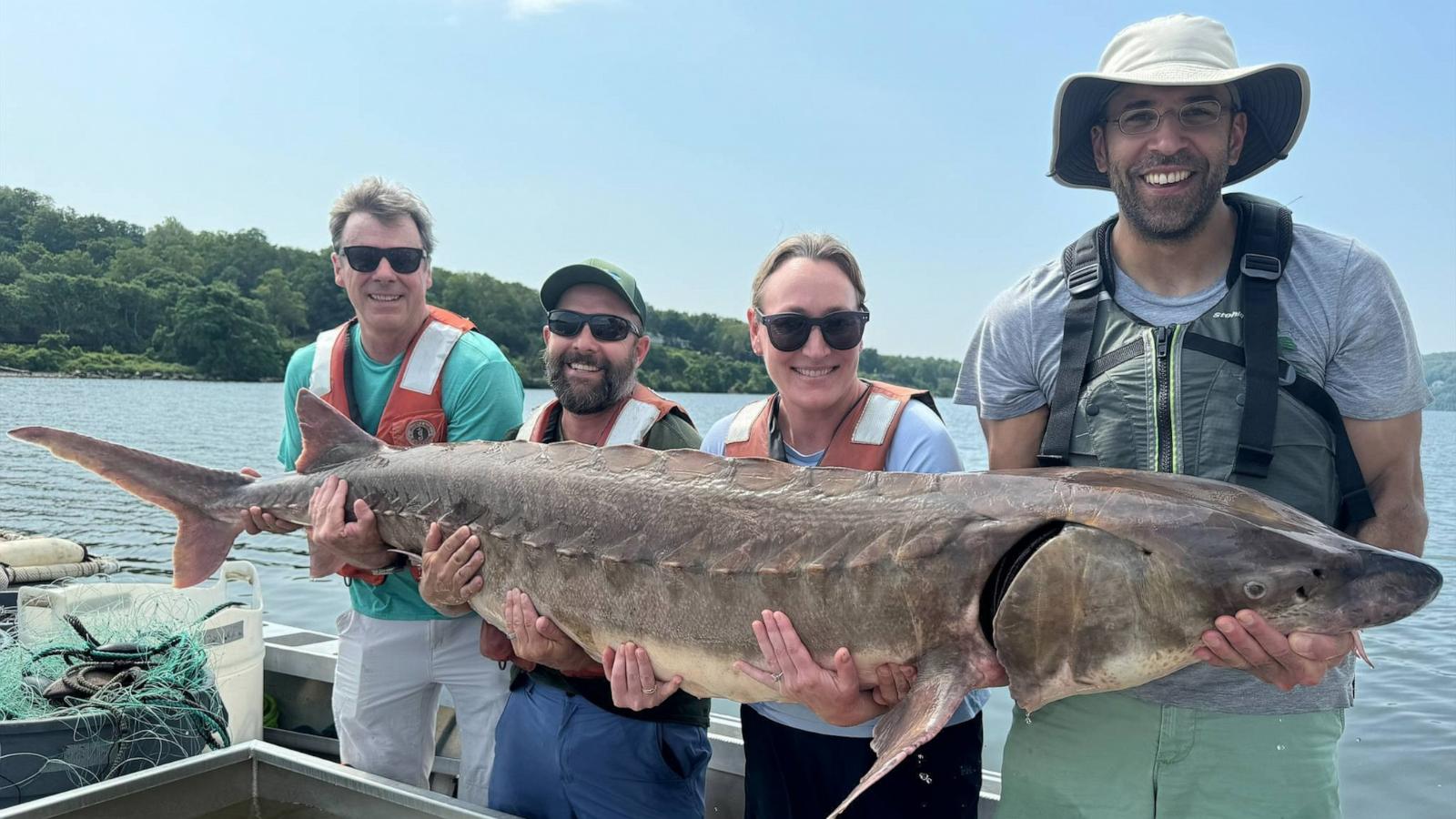A colossal fish measuring 6 feet long and weighing 220 pounds was captured in the Hudson River, New York, during an environmental survey. This significant catch occurred last week as part of an Atlantic sturgeon survey conducted by the Hudson River Estuary Program. The New York State Department of Environmental Conservation (DEC) announced the event on social media, noting that the fish was suspected to be a female that had not yet spawned. The capture was made under a National Marine Fisheries Service (NMFS) endangered species research permit.

Understanding the Sturgeon Population
Atlantic sturgeon are an endangered, anadromous fish species, meaning they spend most of their lives in the ocean but migrate to freshwater rivers like the Hudson to spawn. These migrations can span from Florida to Maine. The DEC has been conducting annual surveys since 2006 to monitor the trends in the Atlantic sturgeon population. These surveys take place over several weeks in May and June, a critical period for sturgeon activity in the Hudson River.
During the survey, the staff uses nets to capture the fish, measure them, scan for existing tags, and tag unmarked individuals. A small fin sample is taken for genetic analysis, and the fish are weighed before being released back into the wild. This comprehensive approach provides valuable data on the health and dynamics of the sturgeon population.
The Role of the Hudson River Estuary Program
The Hudson River Estuary Program plays a crucial role in conserving, restoring, and promoting the enjoyment of the Hudson River and its surrounding valley. The program’s focus spans from the federal dam at Troy to the Verrazano Narrows in New York City, including the upper New York-New Jersey Harbor. This initiative aims to balance ecological health with public use and appreciation of the river.
The Atlantic sturgeon, although significantly larger than average, is the Hudson River’s largest fish and the biggest among New York’s sturgeon species, which also include the shortnose sturgeon and the lake sturgeon. The capture of such a massive sturgeon highlights the Hudson River’s role as a critical habitat for these ancient fish.
Conservation Efforts and Future Prospects
The discovery of this 220-pound sturgeon underscores the importance of ongoing conservation efforts and research programs. By tracking and studying these endangered species, scientists can gain insights into their behaviors, population trends, and overall health. Such data are vital for developing effective conservation strategies and ensuring the survival of these remarkable creatures.

The Hudson River Estuary Program’s work exemplifies how dedicated efforts can lead to significant ecological discoveries and advancements. As the program continues to monitor and protect the sturgeon population, the hope is that these efforts will contribute to the recovery and sustainability of the species.
